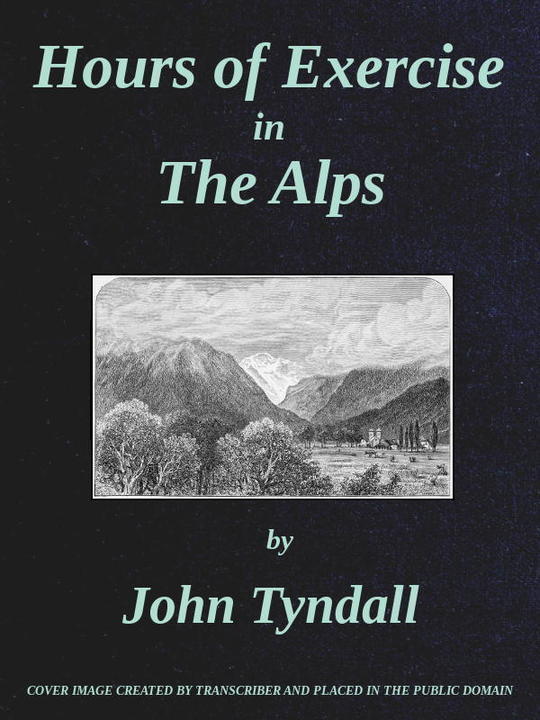
Six Lectures on Light Delivered In The United States In 1872-1873
Free
Description
Contents
Reviews
Language
English
ISBN
Unknown
SIX LECTURES ON LIGHT
DELIVERED IN THE UNITED STATES
1872-1873
BY
1872-1873
BY
JOHN TYNDALL, D.C.L., LL,D., F.R.S.
PREFACE TO THE FOURTH EDITION.
PREFACE TO THE FOURTH EDITION.
CONTENTS.
ON LIGHT
LECTURE I.
§ 1. Introduction.
§ 2. Subject of the Course. Source of Light employed.
§ 3. Rectilineal Propagation of Light. Elementary Experiments. Law of Reflection.
§ 4. The Refraction of Light. Total Reflection.
§ 5. Velocity of Light. Aberration. Principle of least Action.
§ 6. Descartes' Explanation of the Rainbow.
§ 7. Analysis and Synthesis of Light. Doctrine of Colours.
§ 8. Colours of Pigments as distinguished from Colours of Light.
§ 1. Introduction.
§ 2. Subject of the Course. Source of Light employed.
§ 3. Rectilineal Propagation of Light. Elementary Experiments. Law of Reflection.
§ 4. The Refraction of Light. Total Reflection.
§ 5. Velocity of Light. Aberration. Principle of least Action.
§ 6. Descartes' Explanation of the Rainbow.
§ 7. Analysis and Synthesis of Light. Doctrine of Colours.
§ 8. Colours of Pigments as distinguished from Colours of Light.
LECTURE II.
§ 1. Origin and Scope of Physical Theories.
§ 2. The Emission Theory of Light.
§ 3. The Undulatory Theory of Light.
§ 4. Wave-Motion, Interference of Waves, 'Whirlpool Rapids' of Niagara.
§ 5. Analogies of Sound and Light.
§ 6. Interference of Light.
§ 7. Colours of thin Films. Observations of Boyle and Hooke.
§ 8. Newton's Rings. Relation of Colour to Thickness of Film.
§ 9. Theory of 'Fits' applied to Newton's Rings.
§ 10. The Diffraction of Light.
§ 11. Application of the Wave-theory to the Phenomena of Diffraction.
§ 1. Origin and Scope of Physical Theories.
§ 2. The Emission Theory of Light.
§ 3. The Undulatory Theory of Light.
§ 4. Wave-Motion, Interference of Waves, 'Whirlpool Rapids' of Niagara.
§ 5. Analogies of Sound and Light.
§ 6. Interference of Light.
§ 7. Colours of thin Films. Observations of Boyle and Hooke.
§ 8. Newton's Rings. Relation of Colour to Thickness of Film.
§ 9. Theory of 'Fits' applied to Newton's Rings.
§ 10. The Diffraction of Light.
§ 11. Application of the Wave-theory to the Phenomena of Diffraction.
LECTURE III.
§ 1. Derivation of Theoretic Conceptions from Experience.
§ 2. Theory of Crystallization.
§ 3. Ordinary Refraction of Light explained by the Wave Theory.
§ 4. Double Refraction of Light explained by the Wave Theory.
§ 4. Double Refraction of Light explained by the Wave Theory.
§ 5. Polarization of Light explained by the Wave Theory.
§ 1. Derivation of Theoretic Conceptions from Experience.
§ 2. Theory of Crystallization.
§ 3. Ordinary Refraction of Light explained by the Wave Theory.
§ 4. Double Refraction of Light explained by the Wave Theory.
§ 4. Double Refraction of Light explained by the Wave Theory.
§ 5. Polarization of Light explained by the Wave Theory.
LECTURE IV.
§ 1. Action of Crystals on Polarized Light: the Nicol Prism.
§ 2. Colours of Films of Selenite in Polarized Light.
§ 3. Colours of Crystals in Polarized Light explained by the Undulatory Theory.
§ 4. Colours produced by Strain and Pressure.
§ 5. Colours of Unannealed Glass.
§ 6. Circular Polarization.
§ 7. Complementary Colours of Bi-refracting Spar in Circularly Polarized Light. Proof that Yellow and Blue are Complementary.
§ 8. The Magnetization of Light.
§ 9. Iris-rings surrounding the Axes of Crystals.
§ 10. Power of the Wave Theory.
§ 11. The Blue of the Sky.
§ 12. Artificial Sky.
§ 13. Polarization of Skylight.
§ 1. Action of Crystals on Polarized Light: the Nicol Prism.
§ 2. Colours of Films of Selenite in Polarized Light.
§ 3. Colours of Crystals in Polarized Light explained by the Undulatory Theory.
§ 4. Colours produced by Strain and Pressure.
§ 5. Colours of Unannealed Glass.
§ 6. Circular Polarization.
§ 7. Complementary Colours of Bi-refracting Spar in Circularly Polarized Light. Proof that Yellow and Blue are Complementary.
§ 8. The Magnetization of Light.
§ 9. Iris-rings surrounding the Axes of Crystals.
§ 10. Power of the Wave Theory.
§ 11. The Blue of the Sky.
§ 12. Artificial Sky.
§ 13. Polarization of Skylight.
LECTURE V.
§ 1. Range of Vision and of Radiation.
§ 2. Ultra-violet Rays: Fluorescence.
§ 3. The Heat of the Electric Beam. Ignition through a Lens of Ice. Possible Cometary Temperature.
§ 4. Combustion of a Diamond by Radiant Heat.
§ 5. Ultra-red Rays: Calorescence.
§ 6. Identity of Light and Radiant Heat. Reflection from Plane and Curved Surfaces. Total Reflection of Heat.
§ 7. Invisible Images formed by Radiant Heat.
§ 8. Polarization of Heat.
§ 9. Double Refraction of Heat.
§ 10. Magnetization of Heat.
§ 11. Distribution of Heat in the Electric Spectrum.
§ 1. Range of Vision and of Radiation.
§ 2. Ultra-violet Rays: Fluorescence.
§ 3. The Heat of the Electric Beam. Ignition through a Lens of Ice. Possible Cometary Temperature.
§ 4. Combustion of a Diamond by Radiant Heat.
§ 5. Ultra-red Rays: Calorescence.
§ 6. Identity of Light and Radiant Heat. Reflection from Plane and Curved Surfaces. Total Reflection of Heat.
§ 7. Invisible Images formed by Radiant Heat.
§ 8. Polarization of Heat.
§ 9. Double Refraction of Heat.
§ 10. Magnetization of Heat.
§ 11. Distribution of Heat in the Electric Spectrum.
LECTURE VI.
SUMMARY AND CONCLUSION.
SUMMARY AND CONCLUSION.
APPENDIX.
ON THE SPECTRA OF POLARIZED LIGHT.
MEASUREMENT OF THE WAVES OF LIGHT.
ON THE SPECTRA OF POLARIZED LIGHT.
MEASUREMENT OF THE WAVES OF LIGHT.
INDEX.
The book hasn't received reviews yet.










